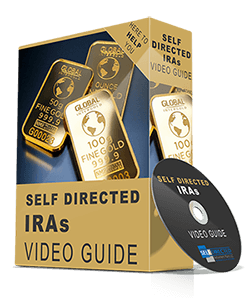What is a Backdoor Roth IRA?
A Backdoor Roth IRA is a strategy that lets high-income earners contribute to a Roth IRA, even if they exceed the IRS income limits. It works by first making a non-deductible contribution to a Traditional IRA and then converting those funds into a Roth IRA. This method allows individuals to enjoy tax-free growth and tax-free withdrawals in retirement while avoiding the income restrictions that typically block direct Roth IRA contributions. However, taxes may apply if the conversion includes pre-tax funds.
A Backdoor Roth IRA is a useful tool for those who want long-term tax advantages and more control over their retirement savings.
Understanding Backdoor Roth IRA Conversion
Suppose you are an Individual with higher earnings. In that case, you may frequently find yourself unable to contribute directly to Roth IRAs due to specified income limits. Traditional IRAs, on the other hand, have no contribution limits.
Since 2010, the IRS has eliminated revenue caps for converting a regular IRA to a Roth IRA, thereby providing richer taxpayers with an alternate path—often referred to as the “backdoor” Roth IRA.
Before delving more into this option, you need first to determine whether you are eligible for direct contributions based on your income and tax filing status. If your earnings exceed specified levels, known as phase-out limits, you are prohibited from making full contributions.
If your earnings fall just below these upper limits, you may make partial payments. The IRS updates these estimates on an annual basis. Study the current 2023 and 2024 figures for guidance in navigating this process and maximizing your retirement savings potential using a backdoor strategy.
How Does a Backdoor Roth IRA Work?
It’s pretty simple! To use a backdoor Roth, first establish a traditional IRA and make non-deductible contributions. After that, convert the account to a Roth IRA. Notably, there are no income limits for these non-deductible contributions; nevertheless, you must still adhere to yearly contribution limits.
You can also convert deductible contributions from a traditional IRA or 401(k) to a Roth IRA. However, keep in mind that taxes may apply to the converted amount.
Roth IRA Contributions Limits for 2024
The contribution limits of the Roth IRA for 2024 are
| Tax Filing Status | Maximum MAGI | Phase-Out Income Limit |
|---|---|---|
| Single | $146,000 | $161,000 |
| Married – Filing Jointly/Widow/Widower | $230,000 | $240,000 |
| Married But Filing Separately | $0 | $10,000 |
Want to know more? Read our detailed blog on “IRA Contribution Limits and Deadlines for 2024 & 2023.”
How to Set Up a Backdoor Roth IRA?
Here are the steps you need to take for backdoor Roth IRA conversion:
- Fund Your IRA Account: Fund it if you already have a traditional IRA account. If you don’t have one, you might need to open one and then put money into it.
- Converting to a Roth IRA: Your IRA administrator provides you with a short form to fill out to go ahead with the process of converting your IRA to a Roth IRA.
- Paying Applicable Taxes: You are supposed to pay income tax on the money you convert to a Roth IRA. You have until the tax deadline for the year in which the conversion was made to pay the applicable taxes on the converted amount.
Backdoor Roth IRA Rules
Follow these rules set by the Internal Revenue Service (IRS):
-
The Pro-rata Rule
The rollovers from traditional IRAs to Roth IRAs have to be done on a pro-rata basis. This is what it means:
To determine the tax bill on the conversion from a traditional IRA to a Roth IRA, the IRS looks at all of your traditional IRA accounts combined. For example, if all of your traditional IRAs combined have 80% pre-tax money and 20% after-tax money, this ratio helps to determine what percentage of the money you convert to a Roth IRA is taxable.
In this example, 80% of the amount you convert is taxable. The IRS applies this pro-rata rule to your total IRA balance at the end of the year and not at the time of conversion.
-
Types of Transfers
Only one of the following conversions is possible:
- Rollover: You withdraw money from your IRA and deposit it into a Roth IRA within 60 days.
- Same Trustee Transfer: This type of transfer involves transferring the money from the IRA to the Roth IRA at the same financial institution.
- Trustee-to-Trustee Transfer: In this type, the IRA provider directly sends the money to your Roth IRA provider.
Tax Implications of a Backdoor Roth IRA
You cannot contribute to a Roth IRA directly if your annual MAGI is higher than a certain limit. If your income is above the phase-out limit, you cannot contribute to a Roth IRA at all.
Backdoor Roth IRAs allow high-income earners to bypass these limits as they don’t apply to backdoor conversions.
Advantages of Backdoor Roth IRA
Here’s a breakdown of the benefits of a backdoor Roth IRA to assist you in making a better decision:-
- No Required Minimum Distributions (RMDs): Unlike other retirement plans, Roth IRAs do not force you to take minimum distributions while alive. This flexibility is a super useful tool in retirement planning.
- Tax-Free Withdrawals in Retirement: Once your money is in a Roth IRA, you can withdraw it tax-free in retirement. This feature can greatly increase your financial independence later in life.
- Assistance in Estate Planning: Roth IRAs can be an excellent estate planning tool. For example, as a couple, you can transfer an inherited Roth IRA into your account and treat the funds as your own. If the initial account was kept for at least 5 years, distributions might also be taxed.
Disadvantages of Backdoor Roth IRA
Aside from the upsides, you should carefully consider the following trade-offs of a backdoor Roth IRA to see if it coincides with your financial objectives:-
- Potential Tax Liability: Converting your Roth IRA may result in a taxable event, which means you could owe federal, state, and local taxes on converted profits and deductible contributions.
- Risk of Higher Tax Band: A conversion may place you in a higher tax band for the year, raising your total tax burden.
- 5-Year Ageing Rule: To be eligible for tax-free distributions, you must follow a five-year ageing rule. This requirement may affect your withdrawal strategy.
Who Can Profit Via a Backdoor Roth IRA?
A backdoor Roth can be especially useful if you make a high salary and exceed the income limits for normal contributions. It is also appropriate if you are willing to pay higher taxes during a Roth conversion in order to get long-term tax-free growth. Furthermore, retirees looking to avoid statutory minimum distributions can find it useful.
Who Might Not Profit Through a Backdoor Roth IRA?
If your income allows you to contribute directly to a traditional Roth IRA, you don’t need this workaround. Suppose you are under the age of 59½. In that case, you should exercise caution when withdrawing converted funds within five years, owing to potential fines.
Furthermore, investors with other traditional IRAs may face issues due to aggregate and pro-rata requirements. This factor might reduce the benefits of using a backdoor Roth entirely.
Need help deciding if a backdoor Roth IRA is right for you? SD Retirement offers expert guidance. Contact us today!
FAQs
Is a backdoor Roth IRA worth it?
The backdoor Roth allows you to get your money into a tax-free account doesn’t require you to take RMDs, and allows you to withdraw contributions whenever you want. That said, it isn’t the right strategy for everyone. Before you decide to go for the backdoor Roth IRA, ask yourself or your financial advisor whether it’s a sensible choice.
Is a backdoor Roth IRA legal?
A backdoor Roth IRA is legally permissible as long as the tax law requirements are met.
How do I set up a backdoor Roth IRA?
There are 3 ways:
- Put cash into a traditional IRA and then roll it into a Roth IRA
- Convert your entire IRA right into a Roth IRA.
- Make an after-tax contribution to a 401(k) and then roll it into a Roth IRA.
Why create a backdoor Roth IRA?
If you cannot open a Roth IRA because of your excess income, you may want to do it for the tax benefit of withdrawing tax-free funds in retirement. With a backdoor Roth, it’s possible to open and fund a Roth IRA. This is a significant benefit if you expect to be in a higher tax bracket during retirement.
Additionally, with a Roth IRA, you are not required to take RMDs. You have the choice to withdraw money when you want it or leave it all for your heirs.
What are the options if I don’t want a backdoor Roth?
If your income exceeds the maximum for a backdoor Roth and you are not interested in that option, you should explore investing in taxable accounts instead. While they do not offer the same tax benefits, they do give an effective way to diversify your investment portfolio.
What’s the distinction between a Roth IRA and a backdoor Roth IRA?
A Roth IRA allows direct contributions but has income limits. It allows you to invest after taxes and withdraw tax-free in certain situations. A backdoor Roth, on the other hand, is a creative workaround for people with higher incomes than these limits.
High-income people can still benefit from traditional IRAs by first contributing non-deductible funds to them and then converting those assets to Roth IRAs. This technique effectively provides access to tax-free growth for those who would otherwise be barred from making regular payments.
What is a 401(k) rollover to a Roth IRA?
You can tap into a backdoor Roth IRA by shifting funds from a standard 401(k) to a Roth IRA. Keep in mind that the converted amount may be subject to income tax unless you contributed to your traditional 401(k) without taking any deductions.

My goal is to assist clients/investors in their quest for financial freedom and creating generational wealth through one on one consultation and an abundance of online tools to educate. For the past 5 years I have been a private pension plan consultant with Self Directed Retirement Plans working directly with my partner Rick Pendykoski (owner) or you can .




